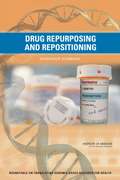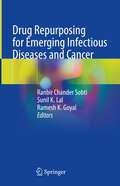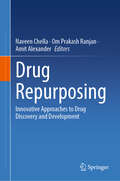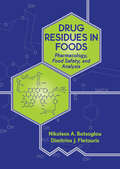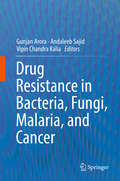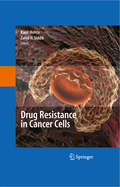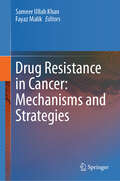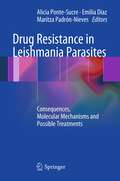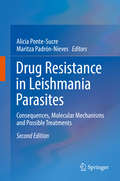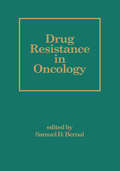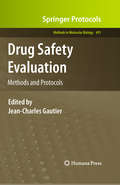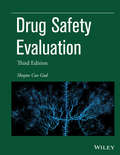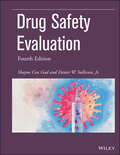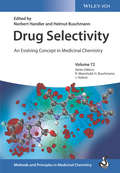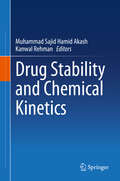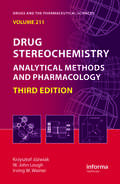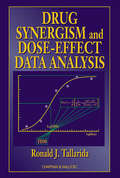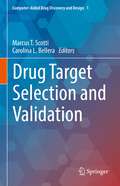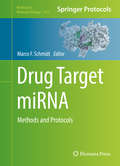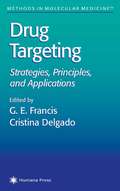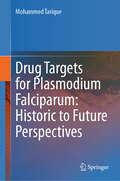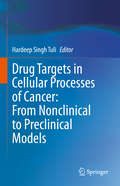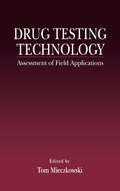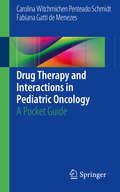- Table View
- List View
Drug Repurposing and Repositioning: Workshop Summary
by Sarah H. BeachyDrug development can be time-consuming and expensive. Recent estimates suggest that, on average, it takes 10 years and at least $1 billion to bring a drug to market. Given the time and expense of developing drugs de novo, pharmaceutical companies have become increasingly interested in finding new uses for existing drugs - a process referred to as drug repurposing or repositioning. Historically, drug repurposing has been largely an unintentional, serendipitous process that took place when a drug was found to have an offtarget effect or a previously unrecognized on-target effect that could be used for identifying a new indication. Perhaps the most recognizable example of such a successful repositioning effort is sildenafil. Originally developed as an anti-hypertensive, sildenafil, marketed as Viagra and under other trade names, has been repurposed for the treatment of erectile dysfunction and pulmonary arterial hypertension. Viagra generated more than $2 billion worldwide in 2012 and has recently been studied for the treatment of heart failure. Given the widespread interest in drug repurposing, the Roundtable on Translating Genomic-Based Research for Health of the Institute of Medicine hosted a workshop on June 24, 2013, in Washington, DC, to assess the current landscape of drug repurposing activities in industry, academia, and government. Stakeholders, including government officials, pharmaceutical company representatives, academic researchers, regulators, funders, and patients, were invited to present their perspectives and to participate in workshop discussions. Drug Repurposing and Repositioning is the summary of that workshop. This report examines enabling tools and technology for drug repurposing; evaluates the business models and economic incentives for pursuing a repurposing approach; and discusses how genomic and genetic research could be positioned to better enable a drug repurposing paradigm.
Drug Repurposing for Emerging Infectious Diseases and Cancer
by Sunil K. Lal Ranbir Chander Sobti Ramesh K. GoyalThis book presents drug repurposing strategies to combat infectious diseases and cancer. It discusses key experimental and in silico approaches for modern drug repositioning, including signature matching, molecular docking, genome-wide associated studies, and network-based approaches aided by artificial intelligence. Further, the book presents various computational and experimental strategies for better understanding disease mechanisms and identify repurposed drug candidates for personalized pharmacotherapy. It also explores the databases for drug repositioning, summarizes the approaches taken for drug repositioning, and highlights and compares their characteristics and challenges. Towards the end, the book discusses challenges and limitations encountered in computational drug repositioning.
Drug Repurposing: Innovative Approaches to Drug Discovery and Development
by Amit Alexander Naveen Chella Om Prakash RanjanThis book offers an insightful exploration of drug repurposing, an innovative approach to drug discovery and development that has the potential to revolutionize the field of medicine. It begins with an introduction to drug repurposing and its history, providing a comprehensive overview of the subject. The readers will embark on a journey through the diverse landscape of drug repurposing strategies. From in silico methods of predicting drug-disease associations to experimental approaches to the integrations of artificial intelligence (AI) and machine learning (ML) in drug repurposing for validating repurposed candidates. The book also delves into the application of drug repurposing in various disease areas, including cancer, inflammatory disorders, and CNS disorders. It explores the potential hurdles involved in the regulatory aspects of the process. The book further covers drug products under clinical trials and provides an overview of the future perspectives of drug repurposing. With its detailed and informative content, this book is a must-read for researchers, clinicians, and healthcare professionals interested in the exciting field of drug repurposing.
Drug Residues in Foods: Pharmacology: Food Safety, and Analysis
by Nikolaos A. Botsoglou Dimitrios J. Fletouris"Offers unique data on the physiochemical properties, functions and metabolism, toxicological and pharmacological effects, regulatory control, antimicrobial resistance, and consumer perceptions of food residue regulation."
Drug Resistance in Bacteria, Fungi, Malaria, and Cancer
by Vipin Chandra Kalia Gunjan Arora Andaleeb SajidThis book is a compilation of past and recent knowledge in the field of emerging drug resistance. The book covers major aspects of drug resistance in bacteria, fungi, malaria, and cancer. Human survival on earth is constantly threatened by disease and syndrome. From the early days, the aim of research in medicine was to find therapeutic agents that can improve the quality of human life. Although humans are dependent on natural compounds from early days their dependence of drugs increased excessively in last century. The advances in chemistry and biology have helped researchers to identify the drugs that have improved treatment of many diseases. The primary factor for treatment of these diseases is dependent on the efficacy of drugs available. The development of resistance to these drugs is one of the major hindrances. Although there are number of books available on this topic, "drug resistance" biology across kingdoms has never been discussed in a coherent way.
Drug Resistance in Cancer Cells
by Susan E. Bates Zahid H. Siddik Kapil MehtaThe inability of cancer drugs to destroy metastatic tumors is the major reason why cancer therapy fails. Even though the process of drug design has become exceedingly sophisticated in recent years, there is not a single drug available that is 100% effective against metastatic cancer. Resistance to treatment with anticancer drugs results from a variety of factors including individual variations in patients and somatic/genetic differences in tumors, even those from tissue of origin. Although it is a generally accepted fact that the majority of cancers arise from a single precursor cell, it is naïve to consider that tumor is a collection of genetically identical cells. Genetic instability and accumulation of mutations are important hallmarks of cancer cells. This means that dividing cancer cells are able to acquire genetic and epigenetic changes that will favor their malignant phenotype. In view of this, it is fair to say that the cells in a given tumor may be similar but not identical. Therefore, when treated with a drug, the sensitive cells in a tumor succumb to the toxic effects of the drug, and resistant cells continue to survive and multiply. The tumor, which re-grows from these residual resistant cells, is not sensitive to the original drug.
Drug Resistance in Cancer: Mechanisms and Strategies
by Sameer Ullah Khan Fayaz MalikThis book tries to emphasize the mechanisms associated with the resistance towards various anti-cancer therapies The focus has been given to the role of cancer stem cells, immune cells, and the multiway impact of tumor microenvironment in drug resistance. The book delves into the role of epigenetic alterations, autophagy, intracellular compartments, and the impact of gut microbiome on therapeutic resistance. Each chapter of the book has elaborated on these aspects that are exclusively or mutually driving the therapeutic non-responsiveness towards various current clinical candidates. In addition to that the book has also discussed novel strategies to overcome the therapeutic challenge by employing combinatorial therapies that can prove to be useful and effective. Overall the book reflects on the current treatment challenges, futuristic strategies and new research initiatives that explore novel treatment options.
Drug Resistance in Leishmania Parasites
by Maritza Padrón-Nieves Emilia Diaz Alicia Ponte-SucreOne of the main problems concerning therapeutic tools for the treatment of parasitic diseases, including leishmaniasis, is that some field parasites are naturally resistant to the classical drugs; additionally, current therapies may select parasites prone to be resistant to the applied drugs. These features are (at least partially) responsible for the disappointing persistence of the disease and resultant deaths worldwide. This book provides a comprehensive view of the pathology of the disease itself, and of parasitic drug resistance, its molecular basis, consequences and possible treatments. Scientists both from academic fields and from the industry involved in biomedical research and drug design, will find in this book a valuable and fundamental guide that conveys the knowledge needed to understand and to improve the success in combating this disease worldwide.
Drug Resistance in Leishmania Parasites: Consequences, Molecular Mechanisms And Possible Treatments
by Maritza Padrón-Nieves Alicia Ponte-SucreDrug resistance is a fundamental factor in treatment failure in diseases like leishmaniasis, although additional factors also play a role in this phenomenon. This volume is the second edition of a well-received book that provides a comprehensive update on the pathology of the disease, as well as on the concept of parasitic drug resistance, its molecular basis, consequences and possible treatments. A valuable resource for scientists both from academia and industry involved in biomedical research and drug design, the book provides the knowledge needed to understand leishmaniasis and to contibute to combatting this disease worldwide.
Drug Resistance in Oncology (Basic and Clinical Oncology)
by Samuel D. BernalThis timely new reference integrates the latest clinical results and laboratory studies on the resistance of specific cancers to chemotherapeutic drugs-covering drug resistance in lung, breast, ovary, and colon cancer as well as hematological malignancies.
Drug Safety Evaluation
by Jean-Charles GautierNon-clinical drug safety evaluation, the assessment of the safety profile of therapeutic agents through the conduct of laboratory studies in in vitro systems and in animals, is an essential step in the progress of new pharmaceuticals heading toward the ultimate goal of clinical trials and, eventually, approval. In Drug Safety Evaluation: Methods and Protocols, expert researchers detail a compendium of analytical technologies with a focus on clarity and applicability in real life laboratory practice. These meticulous contributions feature key topics such as acute to chronic general toxicity studies, histopathology studies, reproductive toxicity studies, genotoxicity studies, safety pharmacology studies, investigative toxicity studies, and safety biomarker studies. As a volume in the highly successful Methods in Molecular BiologyTM series, chapters include brief introductions to their respective subjects, lists of the necessary materials, step-by-step, readily reproducible protocols, and tips on troubleshooting and avoiding known pitfalls. Comprehensive and authoritative, Drug Safety Evaluation: Methods and Protocols serves as an ideal guide to this field, helpful to pharmaceutical scientists, toxicologists, biochemists, and molecular biologists as well as scientists from all other disciplines who wish to translate these thorough methods into their own work.
Drug Safety Evaluation
by Jean-Charles GautierNon-clinical drug safety evaluation, the assessment of the safety profile of therapeutic agents through the conduct of laboratory studies in in vitro systems and in animals, is an essential step in the progress of new pharmaceuticals heading toward the ultimate goal of clinical trials and, eventually, approval. In Drug Safety Evaluation: Methods and Protocols, expert researchers detail a compendium of analytical technologies with a focus on clarity and applicability in real life laboratory practice. These meticulous contributions feature key topics such as acute to chronic general toxicity studies, histopathology studies, reproductive toxicity studies, genotoxicity studies, safety pharmacology studies, investigative toxicity studies, and safety biomarker studies. As a volume in the highly successful Methods in Molecular Biology(tm) series, chapters include brief introductions to their respective subjects, lists of the necessary materials, step-by-step, readily reproducible protocols, and tips on troubleshooting and avoiding known pitfalls. Comprehensive and authoritative, Drug Safety Evaluation: Methods and Protocols serves as an ideal guide to this field, helpful to pharmaceutical scientists, toxicologists, biochemists, and molecular biologists as well as scientists from all other disciplines who wish to translate these thorough methods into their own work.
Drug Safety Evaluation
by Shayne Cox GadThis practical guide presents a road map for safety assessment as an integral part of the development of new drugs and therapeutics.* Helps readers solve scientific, technical, and regulatory issues in preclinical safety assessment and early clinical drug development* Explains scientific and philosophical bases for evaluation of specific concerns - including local tissue tolerance, target organ toxicity and carcinogenicity, developmental toxicity, immunogenicity, and immunotoxicity* Covers the development of new small and large molecules, generics, 505(b)(2) route NDAs, and biosimilars* Revises material to reflect new drug products (small synthetic, large proteins and cells, and tissues), harmonized global and national regulations, and new technologies for safety evaluation* Adds almost 20% new and thoroughly updates existing content from the last edition
Drug Safety Evaluation (Pharmaceutical Development Series)
by Shayne Cox Gad Dexter W. Sullivan Jr.Drug Safety Evluation Comprehensive and practical guide presenting a roadmap for safety assessment as an integral part of the development of drugs and therapeutics This fourth edition of Drug Safety Evaluation maintains the central objective of presenting an all-inclusive practical guide for those who are responsible for ensuring the safety of drugs and biologics to patients, healthcare providers, those involved in the manufacture of medicinal products, and all those who need to understand how the safety of these products is evaluated and shepherding valuable candidates to market. Individual chapters address specific approaches to evaluation hazards, including problems that are encountered and their solutions. Also covered are the scientific and philosophical bases for evaluation of specific concerns (e.g., carcinogenicity, development toxicity, etc.) to provide both understanding and guidance for approaching the new problems that have come to face both our society and the new challenges they brought. The many changes in regulatory requirements, pharmaceutical development, technology, and the effects of Covid on our society and science have required both extensive revision to every chapter and the addition of four new chapters. Specific sample topics covered in Drug Safety Evaluation include: The drug development process and the global pharmaceutical marketplace and regulation of human pharmaceutical safety Sources of information for consideration in study and program design and in safety evaluation Electronic records, reporting and submission, screens in safety and hazard assessment, and formulations, routes, and dosage regimens Mechanisms and endpoints of drug toxicity, pilot toxicity testing in drug safety evaluation, and repeat dose toxicity Genotoxicity, QSAR tools for drug safety, toxicogenomics, nonrodent animal studies, and developmental and reproductive toxicity testing An appendix which provides an up to date guide to CROs for conducting studies Drug Safety Evaluation was written specifically for the pharmaceutical and biotechnology industries, including scientists, consultants, and academics, to show a utilitarian yet scientifically valid path to the everyday challenges of safety evaluation and the problem solving that is required in drug discovery and development.
Drug Selectivity: An Evolving Concept in Medicinal Chemistry
by Raimund Mannhold Jörg Holenz Helmut Buschmann Norbert HandlerThe book provides a current overview and comprehensive compilation for medicinal chemists that discusses the effects of aiming for multiple targets on the entire drug development process. The result is a broad survey of current and future strategies for drug selectivity in medicinal chemistry with theoretical but also practical aspects. Different strategies are presented and evaluated, such as various design approaches, merged multiple ligands, discovery technologies and a broad range of successful examples of unselective drugs taken from all major disease areas. With its wide-ranging view of an emerging new paradigm in drug development, this handbook is of prime importance for every medicinal and pharmaceutical chemist.
Drug Stability and Chemical Kinetics
by Muhammad Sajid Hamid Akash Kanwal RehmanThis book comprehensively reviews drug stability and chemical kinetics: how external factors can influence the stability of drugs, and the reaction rates that trigger these effects. Explaining the important theoretical concepts of drug stability and chemical kinetics, and providing numerous examples in the form of illustrations, tables and calculations, the book helps readers gain a better understanding of the rates of reactions, order of reactions, types of degradation and how to prevent it, as well as types of stability studies. It also offers insights into the importance of the rate at which the drug is degraded and/or decomposed under various external and internal conditions, including temperature, pH, humidity and light. This book is intended for researchers, PhD students and scientists working in the field of pharmacy, pharmacology, pharmaceutical chemistry, medicinal chemistry and biopharmaceutics.
Drug Stereochemistry: Analytical Methods and Pharmacology, Third Edition (Drugs and the Pharmaceutical Sciences)
by Irving W. Wainer Krzysztof Józwiak W. John LoughDrug Stereochemistry: Analytical Methods and Pharmacology, Third Edition covers all aspects of chiral drugs from academic, governmental, industrial, and clinical perspectives, reflecting the many advances in techniques and methodology. Topics include:The use of enzymes in the synthesis and resolution of enantiometrically pure compounds in drug disc
Drug Synergism and Dose-Effect Data Analysis
by Ronald J. TallaridaNot since this author's bestselling Manual of Pharmacologic Calculation has there been an available reference for drug data analysis. Incorporating the most relevant parts of that work, Drug Synergism and Dose-Effect Data Analysis focuses on drug combinations and all the quantitative analyses needed to analyze drug combination dose-effect data and to design experiments with two or more compounds. The book contains the statistical methods, the theory, and the computation algorithms needed to analyze single and combination drug data. Numerous examples accompany a presentation that illustrates the calculations and experimental design considerations for modern drug analysis.
Drug Target Selection and Validation (Computer-Aided Drug Discovery and Design #1)
by Marcus T. Scotti Carolina L. BelleraThe first book in the newly created book series, Computer-Aided Drug Discovery and Design, focuses on the computational aspects of early drug discovery, drug target identification, and validation. It revises current classical paradigms in target and phenotypic-based drug design with still ingrained approximations and concepts and discusses the research in the new network approach concept that include kinetic selectivity and metabolic analysis.Many often-overlooked approximations and concepts in drug discovery are fully covered. Drug Target Selection and Validation includes both introductory sections and research-based sections to be of use to both students and research scientists in drug discovery, design, kinetics and metabolic analysis. Pharmaceutical scientists, pharmaceutics, drug developers, pharmacologists, biomedical researchers in computer science, medicinal chemists, and precision medicine developers benefit from the information provided. The book concludes with a chapter on chemical and structural databases.
Drug Target miRNA
by Marco F. SchmidtThis volume provides a concise and technical discussion of recently developed approaches to overcome challenges, such as pharmacodynamics and pharmacokinetics difficulties, in miRNA drug discovery. These strategies cover anti-sense agents targeting miRNA that are applied in advanced formulations or are chemically optimized to increase delivery; small molecule miRNA modulators to overcome anti-sense agents' limitations; general enhancers of miRNA maturation; and Argonaute 2 protein and its pharmacokinetic parameters. Written in the highly successful Methods in Molecular Biology series format, chapters include introductions to their respective topics, lists of the necessary materials and reagents, step-by-step, readily reproducible laboratory protocols, and tips on troubleshooting and avoiding known pitfalls. Cutting-edge and thorough, Drug Target miRNA: Methods and Protocols is a valuable resource for anyone interested in the ever-evolving field of miRNA drug discovery.
Drug Targeting
by G. E. FrancisG. E. Francis and Cristina Delgado have assembled a comprehensive collection of leading-edge protocols for drug targeting studies. In addition to the detailed step-by-step instruction, the protocols review the principal current targeting strategies, discuss how to build the constructs, examine theoretical considerations relevant to solid tumors, and describe experimental and clinical applications of targeted drug delivery systems. Also present are new chemical and biological approaches to the preparation of targeted biopharmaceuticals, including ribonuclease-antibody chimeras, bispecific antibodies, enzyme-antibody conjugates, and folate-bearing conjugates. Applications include the targeting of myocardial infarctions using liposomal systems, the use of monoclonal antibodies to target malaria and HIV-infected cells, the targeting of fusion proteins to leukemias and lymphomas, and the use of antioxidant enzyme-antibody conjugates to target the pulmonary endothelium. Comprehensive and innovative, Drug Targeting: Strategies, Principles, and Applications documents in practical detail the major new chemical and biological targeting methods now being used to produce today's emerging rich array of novel diagnostic agents and promising biopharmaceuticals.
Drug Targets for Plasmodium Falciparum: Historic to Future Perspectives
by Mohammed TariqueThis book offers a comprehensive exploration of malaria, a life-threatening disease affecting millions globally, with a focus on the parasitic organisms of the genus Plasmodium that cause it. It discusses the challenges posed by the disease, especially in economically developing regions, and delves into the biology and pathophysiology of the Plasmodium species, including their genetic flexibility and resistance to treatments. Special attention is given to P. falciparum, the most dangerous of these parasites, detailing its complex life cycle, interaction with human hosts, and the severe clinical manifestations it can induce. The book further explores the global health concern of antimalarial drug resistance, highlighting the WHO's efforts in combating the disease and the necessity for novel treatments. Innovative research directions, such as targeting the unique organelles of Plasmodium like the apicoplast and employing proteasome inhibitors, are thoroughly examined as potential strategies in the development of new antimalarial drugs. Additionally, it addresses the critical role of the hemoglobin digestion process in the parasite's lifecycle, presenting it as a promising target for therapeutic intervention. This work is an essential resource for researchers, clinicians, and policymakers involved in malaria control and drug development, providing insights into the current challenges and future directions in the fight against this endemic disease.
Drug Targets in Cellular Processes of Cancer: From Nonclinical to Preclinical Models
by Hardeep Singh TuliThis book explores potential cellular drug targets for cancer therapy. The first couple of chapters describe conventional treatment (radiotherapy, chemotherapy, and immunotherapy) & detection (biosensors) strategies for cancer. In contrast, the subsequent chapters address the role of cyclin-dependent kinases and cell cycle regulatory proteins in the growth of cancer cells and their potential as target for cancer treatment. The book then discusses the regulation of various pro-apoptotic and anti-apoptotic proteins via chemotherapeutic drugs. In addition, it examines the molecular mechanisms that are critical for mediating autophagic cell death in cancer cells. It subsequently reviews the role of reactive oxygen (ROS) species during carcinogenesis and during chemotherapy, and the potential of anti-inflammatory routes for the development of new therapeutic modulators. Lastly, it describes therapeutic strategies that target the tumor microenvironment and various angiogenic pathways for the treatment of cancer and to develop personalized medicine. Given its scope, the book is valuable resource for oncologists, cancer researchers, clinicians, and pharmaceutical industry personnel.
Drug Testing Technology: Assessment of Field Applications
by Tom MieczkowskiCovering a wide range of research currently being done in drug analysis, Drug Testing Technology: Assessment of Field Applications compares and evaluates various methods used to determine abused drugs taken by individuals, and their application in various programs and contexts. Controversies associated with various methods, including urine analysis and hair analysis, are examined. Contributors from a wide diversity of disciplines offer advanced knowledge, encompassing work which is technical as well as markedly philosophical. Chapters provide overviews of drug incorporation into hair; the use of hair analysis for compliance measurement in the use of anti-epileptic medications; and the application of drug testing to the psychiatric treatment of substance abuse disorders. Drug Testing Technology: Assessment of Field Applications provides information useful in medical applications, workplace testing, criminal justice monitoring community epidemiology, and drug treatment assessment.
Drug Therapy and Interactions in Pediatric Oncology
by Carolina Witchmichen Penteado Schmidt Fabiana Gatti de MenezesThere are few publications about drug interactions in chemotherapy and even less about pediatric oncology treatment. For this reason, the present book is intended to offer guidelines about drug interactions for physicians, pharmacists and the other healthcare professionals involved in the chemotherapy of pediatric patients. In this book the reader will have access to a primary introduction for the major diseases in pediatric oncology, followed by the major therapeutic protocols. Following that, the most important drug interactions in pediatric oncology treatment are presented and discussed in detail. Finally, important topics such as Drug-Food Interactions are addressed. Drug Therapy and Interactions in Pediatric Oncology focuses in great detail on the drug interactions in Pediatric Oncohematology and will be an indispensable resource in daily practice for a wide range of health providers.
